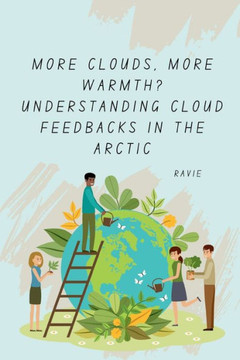
Tredition Gmbh
Understanding Climate Change in the Arctic : Feedback Mechanisms and Aerosols
Product Code:
9783384279071
ISBN13:
9783384279071
Condition:
New
$22.88

Understanding Climate Change in the Arctic : Feedback Mechanisms and Aerosols
$22.88
Arctic aerosol modulates the Arctic radiative energy balance through direct interaction with the solar and terrestrial radiation and by changing the cloud properties (Garrett et al. 2004) as well as atmospheric dynamics (Doherty et al. 2013). It therefore interacts with the feedback mechanisms that lead to the AA. The e?ects of the aerosol radiation interaction depend on the altitude of the aerosol particles, the underlying surface, the time of year, and the aerosol composition. BC is of special interest, since it is the aerosol species that absorbs solar radiation most e?ciently. Mineral dust is important because of its e?ect on clouds globally, but also in the Arctic, with vertically integrated dust burdens in the range of 10 mg m-2, the majority of which is transported from outside of the Arctic, with 38 % being transported from Asia and 32 % from Africa (Groot Zwaaftink et al. 2016). There its interaction with solar radiation it is even more important because of the high surface albedo, which can decrease by the deposition of mineral dust (Groot Zwaaftink et al. 2016). Sulphate is typically associated with the re?ection of solar radiation, an e?ect that is less relevant in the Arctic than elsewhere because of the high surface albedo, and is not active during polar night.
| Author: Shobha Srinivasan Chopra |
| Publisher: Tredition Gmbh |
| Publication Date: Jul 04, 2024 |
| Number of Pages: NA pages |
| Language: English |
| Binding: Paperback |
| ISBN-10: 3384279077 |
| ISBN-13: 9783384279071 |





